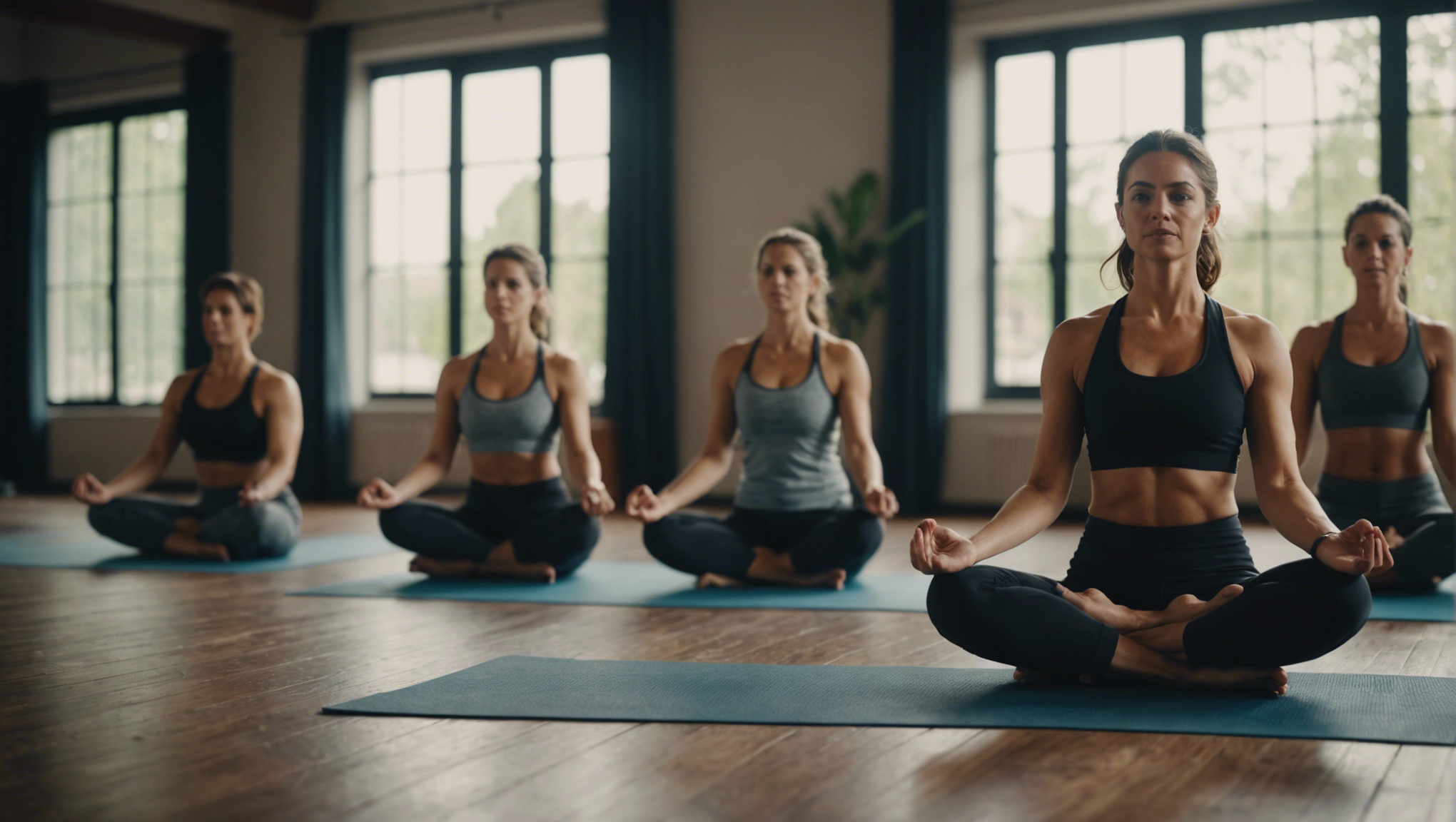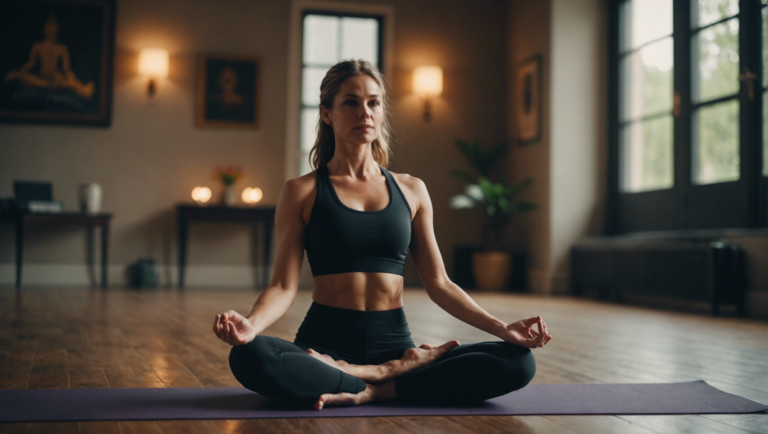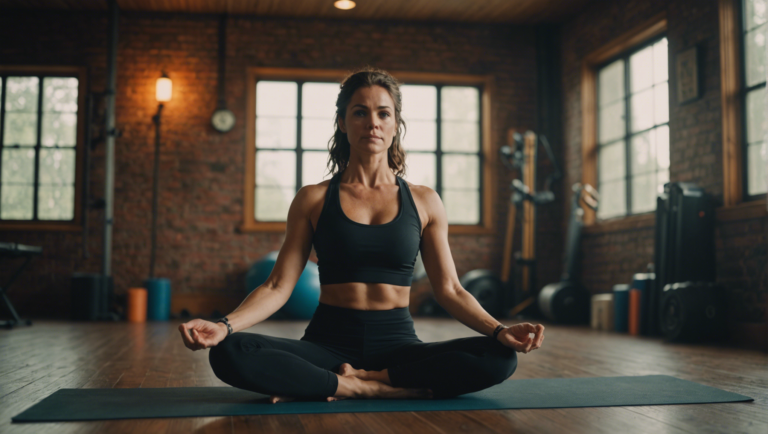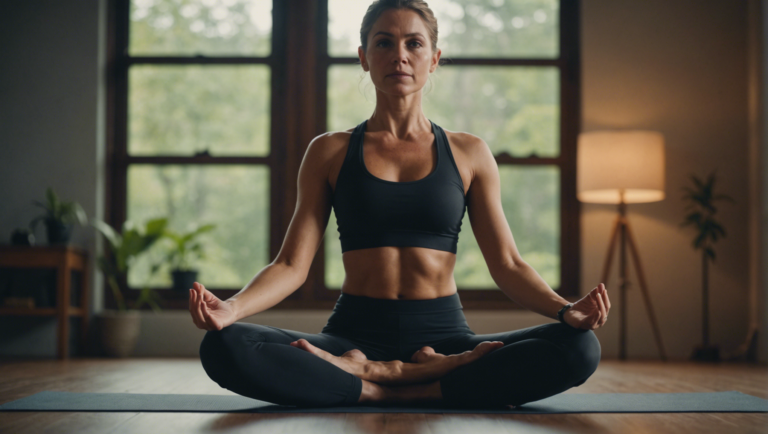Optimal Number Of Yoga Classes Per Week For Maximum Benefits
Determining the Optimal Number of Yoga Classes per Week for Maximum Benefits
Yoga has increasingly become a preferred method for enhancing physical and mental health among people from all walks of life. Its benefits range from improved flexibility and strength to reduced stress and heightened mindfulness. However, with the bustling nature of today’s lifestyle, one question remains pertinent: How often should one engage in yoga practice to reap the maximum benefits? Unraveling this query requires delving into the interplay between frequency, duration, and the intensity of yoga sessions, alongside an individual’s goals, schedule, and body response.
Understanding Your Yoga Goals
Before crafting a yoga schedule, it is crucial to clarify your objectives. Are you aiming at improving physical strength, achieving mental tranquility, or both? The clarity in your goals plays a decisive role in determining the frequency of your practice.
Finding a Balance between Flexibility and Strength
Those seeking to enhance their physical capabilities might find that a combination of dynamic styles, like Vinyasa or Ashtanga, interspersed with restorative sessions, offers a balanced approach. This mix not only builds strength but also promotes flexibility and recovery.
Mental Well-being Through Mindful Practice
For individuals focusing on stress reduction and mental clarity, incorporating daily meditation or gentle yoga styles such as Yin or Hatha could be advantageous. These practices focus more on the mental aspects and can be performed daily without overwhelming the body.
Tailoring Frequency to Your Lifestyle
A common misconception is that one must practice yoga every day to see benefits. While daily practice is advantageous, it is neither feasible nor necessary for everyone. The key is to tailor the frequency of your sessions to fit your lifestyle, ensuring consistency over the long term.
Harmonizing Practice with Daily Commitments
For those with demanding schedules, aiming for 3-4 sessions a week can provide substantial benefits without causing undue stress. This frequency is manageable for most and helps in maintaining a routine that aligns with other commitments.
Adapting to Physical Needs and Capacity
Listen to your body and adjust the intensity and duration of your sessions accordingly. Beginners or those recovering from injuries might benefit from shorter, more frequent sessions, while experienced practitioners may opt for longer, more intense classes 2-3 times a week.
The Ideal Yoga Practice Framework
While personalization is key, a general framework can be helpful for those embarking on their yoga journey or looking to refine their current practice.
Balanced Approach for Holistic Benefits
Striving for a mix of yoga styles throughout the week can cater to a comprehensive range of benefits. Incorporate a blend of strength-building, flexibility-enhancing, and meditative practices to address both physical and mental health comprehensively.
Progressive Intensity for Sustained Growth
Avoid plateauing by gradually increasing the intensity of your practice. This could mean progressing to more advanced poses, integrating longer holds, or incorporating additional meditation time into your sessions.
Adjusting Over Time
Yoga is a personal and evolving journey. What works for you now may change as you grow in your practice. Regularly reassess your goals, physical condition, and schedule to fine-tune your routine. This dynamic approach ensures that your practice continues to serve your evolving needs.
Engaging regularly in yoga practice promises a plethora of benefits, impacting various aspects of health and well-being. Determining the optimal number of yoga classes per week is a personalized process, reflecting one’s goals, lifestyle, and physical readiness. While guidelines suggest a balanced mix of styles practiced 3-4 times weekly, listening to your body and staying flexible in your approach are paramount. Yoga is not merely a physical activity but a life-enhancing practice whose true essence lies in the balance it creates within one’s life. Embrace yoga as a journey of discovery, allowing its principles to guide you toward a healthier, more harmonious existence.
The Influence of Personal Fitness Goals on Yoga Frequency
Embarking on a yoga journey presents a unique pathway for each individual, often sculpted by personal fitness goals, aspirations, and needs. The frequency at which one might choose to practice yoga can significantly be influenced by these personal ambitions, ranging from seeking mental tranquility to achieving rigorous physical transformations. Understanding the symbiotic relationship between one’s fitness objectives and the optimal number of yoga sessions per week can unlock a tailor-made blueprint for wellness and progress.
How Personal Goals Shape Yoga Practices
Yoga, a versatile practice with roots extending over thousands of years, encompasses a plethora of styles, each with its distinctive benefits and intensity levels. Whether your fitness goal is to increase flexibility, build strength, reduce stress, or enhance mindfulness, the frequency of your yoga sessions plays a pivotal role in achieving these objectives. A nuanced approach, considering both the tangible and intangible goals, can guide practitioners toward a schedule that best aligns with their aspirations.
Navigating Through Styles and Intensity Levels
The sheer variety of yoga styles—from the tranquility-inducing Yin Yoga to the physically demanding Ashtanga or Vinyasa flows—means that the choice of how often to engage in yoga can vary dramatically based on the desired outcomes. For instance, someone aiming for muscle tone and cardiovascular improvement might gravitate towards more frequent and intense sessions, while another individual seeking mental clarity and stress relief might find lesser, more meditative practices to be optimal.
Tailoring Frequency to Goals and Lifestyle
Creating a yoga routine that complements one’s daily schedule while effectively moving them towards their fitness targets requires a strategic approach. Recognizing that each body has its unique rhythm and recovery needs is crucial. For some, daily practice may be beneficial and sustainable, whereas others may find that engaging in yoga three to four times a week allows for the necessary rest and recuperation between sessions.
The Role of Progression and Adaptability
As with any fitness regimen, progression in yoga should be anticipated and embraced. Over time, as the body adapts and fitness levels improve, practitioners might find it necessary to adjust the frequency, duration, or intensity of their sessions. This dynamic approach ensures continuous growth and prevents plateaus, keeping the journey both challenging and rewarding.
Balancing Aspiration with Wellness
While pushing towards personal fitness goals, it is vital to maintain a balance that fosters overall health and well-being. Yoga offers more than just physical benefits; it is a holistic practice that nurtures the mind, body, and spirit. Therefore, the chosen frequency should not only propel individuals towards their physical aspirations but also promote mental and emotional harmony.
A Personalized Path to Fitness
Ultimately, the optimal frequency of yoga practice is deeply personal and should be reflective of an individual’s goals, physical capabilities, and life circumstances. Regular self-assessment and possibly consultation with yoga professionals can help in fine-tuning a routine that is both challenging and rewarding. Embracing yoga as a flexible tool for personal development allows individuals to sculpt a practice that resonates with their fitness aspirations and lifestyle, ensuring a harmonious journey towards health and mindfulness.
The intersection of personal fitness goals with the frequency of yoga practice embodies a journey of exploration and self-discovery. Yoga, with its rich diversity and adaptability, offers a unique platform to align personal ambitions with holistic well-being, crafting a path that is uniquely yours. As practitioners navigate this path, they uncover the profound impact of tailored yoga practices on their physical health, mental clarity, and overall quality of life, illuminating the intricate dance between personal aspirations and the ancient art of yoga.
Balancing Yoga with Other Forms of Exercise: A Holistic Approach to Fitness
Yoga, with its millennia-old tradition, has woven itself into the fabric of modern wellness cultures, garnering acclaim for its holistic benefits that encompass mental, physical, and spiritual well-being. While it stands as a powerful practice on its own, the integration of yoga with other forms of exercise can cultivate a more rounded approach to fitness, amplifying health outcomes and fostering balance. This article delves into the art of melding yoga with varied exercise regimens, touching on the synergy this creates and the enhanced benefits it brings.
Achieving a Harmonious Fitness Blend
In the quest for optimal health and fitness, it’s essential to recognize the unique contributions of different forms of exercise. Yoga excels in enhancing flexibility, reducing stress, and improving mental focus. However, integrating strength training, cardiovascular workouts, and other activities can provide a comprehensive fitness program that addresses all aspects of physical health.
Combining yoga with strength training, for example, results in a balanced approach to muscle development. Yoga’s posture and flexibility work complement strength training by promoting muscle recovery, reducing the risk of injury, and increasing the range of motion, which in turn can enhance the effectiveness of strength workouts.
Similarly, incorporating cardiovascular activities like running, cycling, or swimming with a regular yoga practice can boost heart health, increase stamina, and improve respiratory efficiency. The mindfulness cultivated through yoga can also enhance the psychological enjoyment of cardio exercises, making them feel less like a chore and more like a moving meditation.
Tailoring Your Routine for Maximum Benefit
Creating a balanced routine requires considering individual fitness goals, schedules, and preferences. A holistic approach advocates for listening to the body’s needs and integrating various exercises in a way that feels nourishing rather than depleting. For instance, on days of intense strength training or cardio workouts, a gentle yoga session can serve as an excellent counterbalance, aiding in recovery and reducing muscle soreness.
The frequency and intensity of the routines should be tailored to individual endurance levels and fitness objectives. A mix that includes 2-3 days of strength training, 2 days of cardiovascular work, and daily yoga practices—varying in intensity from gentle to vigorous—can offer a well-rounded regimen. The key lies in maintaining variety and consistency, ensuring each aspect of fitness is addressed.
Harnessing the Mental Benefits of a Combined Approach
The psychological benefits of integrating yoga with other forms of exercise are profound. Exercise, in general, is known for its mood-boosting and stress-reducing effects, attributed to the release of endorphins. Yoga, specifically, promotes mindfulness, which can significantly improve the mental and emotional experience of exercising.
A combined approach not only alleviates physical stress but also contributes to mental well-being, making the practice of regular exercise more sustainable and enjoyable. The variation keeps the mind engaged, reduces boredom, and can help in developing a more positive and holistic relationship with fitness.
Navigating Challenges and Setting Realistic Expectations
Blending different forms of exercise with yoga is not without its challenges. Time constraints, physical limitations, and the potential for overtraining are valid concerns that require mindful management. It’s crucial to adopt a flexible mindset, allow for rest days, and listen to the body’s signals to prevent burnout.
Setting realistic expectations and gradually building up the intensity and frequency of workouts can foster a sustainable practice. Consulting with fitness professionals and considering one’s health conditions are also important steps in customizing an approach that safely meets personal goals.
Embracing a Holistic Approach to Fitness
In the broader spectrum of health and wellness, integrating yoga with other exercise forms embodies a holistic approach to fitness that nurtures the body, mind, and spirit. This synthesis not only enhances physical health outcomes but also cultivates a deeper sense of balance and wellbeing.
As individuals navigate their fitness journeys, the fusion of yoga with diverse exercise practices offers a roadmap to achieving a more balanced, healthy, and fulfilled life. Through mindful integration and personalized routines, the quest for holistic fitness becomes not just a goal, but a continuous, enriching journey.
The Role of Yoga Intensity and Style in Shaping Your Weekly Schedule
Discovering the perfect equilibrium in your yoga practice involves more than just earmarking a slot in your weekly calendar. It demands a nuanced understanding of the interplay between the intensity and style of yoga you choose and its impact on determining an optimal weekly schedule that fosters maximum benefits. This nuanced approach ensures your practice is both sustainable and beneficial, aligning with personal goals, physical needs, and lifestyle constraints.
Understanding Yoga Intensity Levels
Yoga offers a spectrum of intensities, from the restorative gentleness of Yin Yoga to the physically demanding sequences of Ashtanga or Vinyasa. Recognizing where each style falls on this continuum is essential for crafting a weekly yoga schedule that not only advances your practice but also ensures adequate rest and recovery.
Gentle and Restorative Yoga
Gentle yoga styles, such as Hatha and Yin, emphasize slow movements, deep stretches, and prolonged poses. They are ideal for days when your body needs to recover from intense physical activity or stress. Integrating these sessions into your weekly routine can enhance flexibility, aid in muscle recovery, and provide a meditative, stress-relieving experience.
Dynamic and High-Intensity Yoga
On the opposite end are dynamic styles like Ashtanga, Vinyasa, and Power Yoga, known for their fast-paced flows and challenging poses. These practices elevate heart rate, promote strength building, and improve cardiovascular endurance. However, due to their intensity, they demand more significant recovery time to prevent overuse injuries and burnout.
Tailoring Your Weekly Yoga Schedule
Your yoga schedule should be a dynamic structure, adaptable to the ever-changing needs of your body and life circumstances. It’s about finding a balance that supports growth without pushing to the point of exhaustion.
Listen to Your Body
The cornerstone of any yoga practice is mindfulness—listening intently to what your body needs. Some weeks, you may find that your body craves the vigorous movement of Vinyasa. Other times, a gentler approach may be necessary. Adjust your weekly schedule based on these internal cues to maintain a harmonious balance between challenge and rest.
Balancing Intensity for Well-rounded Benefits
Strive for a well-rounded practice that incorporates both high-intensity and low-intensity sessions. For example, you might schedule three dynamic yoga classes on alternate days and fill the rest of your week with gentler, restorative sessions. This balance promotes physical strength, flexibility, mental clarity, and emotional stability.
Considering Lifestyle and Goals
Your yoga practice should complement, not complicate, your life. Consider your work schedule, social commitments, and personal goals. If you’re training for a marathon, for instance, integrating more restorative yoga sessions can support recovery and flexibility. Conversely, if you’re looking to build strength or lose weight, emphasizing more dynamic classes might align better with your objectives.
Fine-Tuning for Optimal Benefits
No "one size fits all" formula dictates the exact number or combination of yoga sessions one should practice weekly. The key lies in fine-tuning your schedule by observing how different practices affect your body and psyche.
Experiment and Reflect
Be willing to experiment with your weekly schedule, adjusting the frequency, intensity, and style of classes as you go. Reflect on how you feel physically and emotionally after each session and week. Are you progressing toward your goals? Do you feel energized or depleted? These insights will guide you in refining your practice for maximum benefit.
Emphasize Consistency Over Quantity
While it’s tempting to equate more classes with faster progress, the quality and consistency of your practice hold greater value. Regularly engaging with yoga, even if it means fewer classes per week, can have profound effects on your well-being.
Yoga is a deeply personal journey that intertwines the physical with the mental and spiritual. By considering the intensity and style of yoga in shaping your weekly schedule, you foster a practice that nurtures growth, health, and harmony. Listen to your body, respect its needs, and allow your practice to evolve alongside you for a rewarding and sustainable yoga journey.
Managing Expectations: The Realistic Outcomes of Regular Yoga Practice
Understanding the True Impact of Yoga on Wellness
Yoga, an ancient practice with roots stretching back thousands of years, has evolved into a global phenomenon celebrated for its holistic benefits. Amidst its rise in popularity, it’s essential to navigate the landscape of expectations versus reality in the journey of regular yoga practice. Unveiling the realistic outcomes of yoga requires a nuanced understanding of its impact on physical health, mental well-being, and overall lifestyle.
The Physical Transformations: Beyond Flexibility and Strength
Regular yoga practice heralds significant changes in one’s physical health, but it’s crucial to recognize that these transformations unfold over time and vary from person to person. Yoga enhances flexibility, muscle tone, and strength, contributing to an improved posture and potentially leading to weight loss. However, the caveat remains that these physical benefits are often progressive and depend on consistent practice, the variety of yoga styles undertaken, and individual body responses.
Mental and Emotional Equilibrium: The Subtle Power of Yoga
One of the most profound but less visible outcomes of yoga lies in its ability to foster mental and emotional balance. Yoga employs breath control, meditation, and physical movements to reduce stress, enhance mood, and promote a state of mindfulness. This mental clarity and peace often translate into better sleep patterns, heightened focus, and an overall sense of well-being. While these benefits are substantial, they remind us that yoga is not a quick fix but a gradual journey toward inner stability.
Lifestyle and Social Connectivity: Extending Beyond the Mat
Yoga’s influence often permeates beyond individual practice, impacting lifestyle choices and social interactions. Regular practitioners might find themselves adopting healthier eating habits, engaging more in self-care routines, and experiencing a newfound sense of community within yoga groups. However, it’s essential to approach yoga as one component of a balanced lifestyle rather than a panacea for all life’s challenges.
Managing Expectations: The Path to Continued Growth
The journey of yoga is unique for every individual, and managing expectations is key to a rewarding practice. It’s vital to set realistic goals, recognizing that progress might be slow and non-linear. Celebrating small victories and remaining patient with oneself ensures a sustainable and fulfilling yoga journey. Moreover, understanding that yoga is not competitive but rather a personal path of growth can help maintain motivation and focus.
Expert Advice: Listening to Your Body and Finding Your Practice
Consulting with experienced yoga instructors and healthcare professionals can provide personalized advice tailored to one’s needs and limitations. They can offer insights into the most suitable yoga styles, frequency of practice, and modifications for specific health conditions. Engaging in a practice that resonates with one’s body and lifestyle is central to experiencing the manifold benefits of yoga.
Regular yoga practice promises a journey filled with discovery, challenges, and transformations. By setting realistic expectations and embracing patience, practitioners can navigate the multifaceted benefits of yoga, from physical health and mental clarity to lifestyle enhancements and social well-being. Remember, the true essence of yoga lies not in the perfection of poses but in the journey of exploration and the gradual unveiling of one’s inner strength and calm.
Conclusion
Finding the sweet spot in your yoga practice is akin to a personal journey of discovery, one that intertwines the physical with the spiritual, and the mental with the emotional. The path to determining the optimal number of yoga classes per week is not paved with one-size-fits-all solutions but instead requires a deep dive into one’s personal fitness goals, existing routines, and the intricate dance between different forms of exercise and yoga practices. In navigating this journey, it’s crucial to recognize the nuanced layers of influence that your fitness aspirations, the intensity and style of yoga, and the integration of yoga with other physical activities have on shaping a weekly schedule that resonates with your body’s needs and your soul’s yearnings.
Each practitioner’s optimal frequency of yoga sessions will be uniquely tailored to their individual fitness goals. Whether seeking to enhance flexibility, build strength, foster mental clarity, or cultivate a deeper sense of spiritual connection, the alignment of your yoga practice with your objectives serves as a guiding light. The acknowledgment of this aligns with the understanding that yoga is not merely a physical exercise but a holistic discipline that encompasses the mind, body, and spirit. This alignment ensures that each session on the mat moves you closer to your aspirations, highlighting the significance of clarity in your fitness goals when determining the frequency of your practice.
Equally important is the harmonization of yoga with other forms of exercise. This holistic approach to fitness acknowledges the value of diversity in physical activity, understanding that variety can enhance overall well-being, prevent injury, and stave off the monotony that can sometimes accompany routine. By balancing yoga with other exercises, you’re not only promoting a more rounded physical fitness regime but also opening the door to elevated levels of mental and emotional well-being. This balance ensures that your body receives a comprehensive range of movements and stimuli, crucial for fostering resilience and adaptability.
Furthermore, the choice of yoga intensity and style plays a pivotal role in crafting a practice schedule that aligns with your life’s rhythms and responsibilities. High-intensity styles such as Ashtanga or Power Yoga might appeal to those with robust physical goals, necessitating adequate recovery time between sessions. In contrast, gentler practices like Yin or Restorative Yoga could be practiced more frequently, serving not just as a tool for physical conditioning but as a refuge for mental and emotional recuperation. Thus, a nuanced understanding of the various yoga styles and their impact on the body and mind is essential for curating a practice schedule that supports your overall health and well-being.
However, managing expectations is perhaps the most critical aspect of establishing a routine that fosters long-term commitment and yields tangible benefits. The journey through yoga is one of gradual exploration and discovery, where the most profound transformations occur over time and with consistent practice. Understanding that immediate, dramatic changes are less common than subtle, incremental progress helps set a realistic framework for evaluating the benefits of your yoga practice. This realistic perspective promotes patience, perseverance, and a deeper appreciation for the multiple dimensions of improvement that yoga offers.
Ultimately, the quest to ascertain the ideal number of yoga classes per week is a deeply personal endeavor that requires introspection, experimentation, and adjustment. It’s about finding harmony between exertion and rest, challenge and ease, growth and contentment. By considering your fitness goals, integrating yoga with other physical activities wisely, selecting the right mix of intensity and style, and setting achievable expectations, you craft a yoga practice that is sustainable, enjoyable, and profoundly beneficial. This balanced approach not only optimizes your physical health but also nourishes your mental, emotional, and spiritual dimensions, leading to a richer, more fulfilling experience both on and off the yoga mat.




